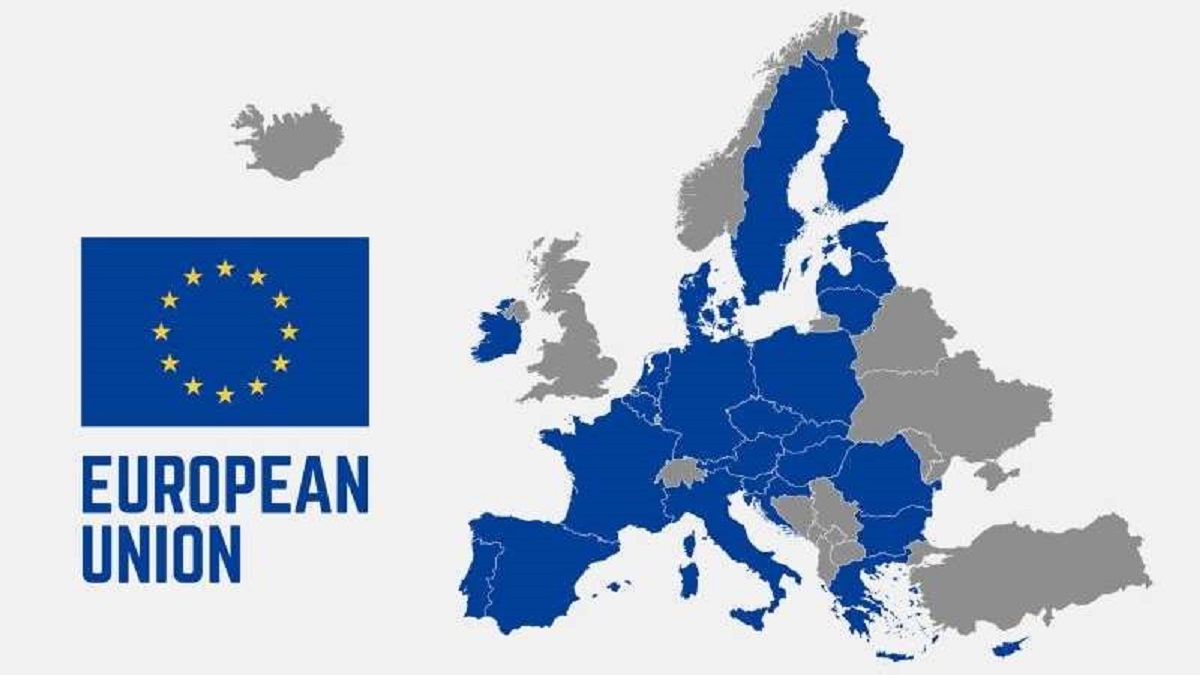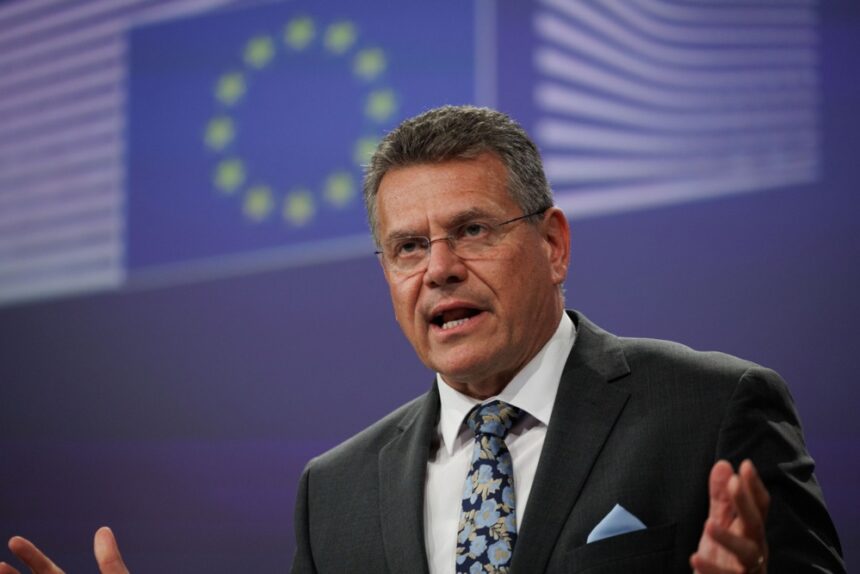Brussels – The European Union is preparing a united response to tariffs imposed by U.S. President Donald Trump. Officials are expected to approve countermeasures targeting up to $28 billion worth of American goods, ranging from dental floss to diamonds.
The U.S. has announced 25% tariffs on steel, aluminum, and cars, along with 20% duties on nearly all other EU exports. These measures impact 70% of the EU’s exports to the U.S., which totaled €532 billion (about $585 billion) last year. Additional tariffs on items like copper, pharmaceuticals, semiconductors, and timber could follow.
The European Commission, which oversees trade for the bloc, is set to propose a list of U.S. products for retaliation. Items being considered include American meat, cereals, wine, wood, clothing, chewing gum, vacuum cleaners, and toilet paper.
EU trade ministers will meet in Luxembourg on Monday to discuss the tariffs and agree on next steps. The goal is to present a united message: the EU is open to negotiating the removal of tariffs but prepared to act if those talks fail.
“We feared Brexit might weaken unity, but it didn’t. This situation is different, but we all see the value in a common trade policy,” a European Union diplomat told Reuters.

European Union Tariffs
Opinions within the European Union vary on how to proceed. France has suggested going beyond tariffs, with President Emmanuel Macron calling on European businesses to halt U.S. investments until there’s clarity.
Ireland, whose economy is closely tied to U.S. trade, has advised a cautious approach. Italy, a major exporter to the U.S., has questioned whether retaliation is the best course of action.
“It’s a tough balance. The response can’t be too weak, or it won’t work. But it also can’t provoke escalation,” another diplomat explained.
So far, discussions with Washington have led nowhere. European Union Trade Chief Maros Sefcovic described recent talks with U.S. officials as “frank,” stating the tariffs are “harmful and unnecessary.”
The EU’s initial counter-tariffs are expected to move forward with a vote on Wednesday. Unless a qualified majority blocks them, the measures will take effect in two phases—some starting April 15 and the rest in mid-May.
European Commission President Ursula Von Der Leyen will also meet with leaders from the steel, automotive, and pharmaceutical industries early this week to evaluate the impact of U.S. tariffs and decide on further actions.
Global Financial Markets
The ripple effects of U.S. tariff policies sent shockwaves through global markets, sparking widespread panic on Monday. Asian markets experienced sharp declines shortly after opening. Japan’s Nikkei 225 index plunged nearly 9% at one point before recovering slightly to close 7.83% lower, marking its worst single-day drop since August 2023.
South Korea’s KOSPI fell 5.57%, triggering a temporary trading halt, while Hong Kong’s Hang Seng Index closed with a staggering 13.2% loss—its worst in 30 years. On the Chinese mainland, the Shanghai Composite dropped 7.34% by the close, with more than 2,900 A-share stocks hitting the country’s daily loss limit. Taiwan’s key index also suffered, crashing 9.7% and activating circuit breakers.
European markets mirrored the downturn, extending losses after the opening bell. By mid-afternoon in London, the Stoxx 600 was down 3.8%, with all sectors and major exchanges posting significant losses. Germany’s DAX dropped 3.75%, rebounding slightly after an earlier plunge of 10%. France’s CAC 40 fell 4%, while London’s FTSE 100 recorded a 3.61% drop.
In the U.S., Wall Street faced heavy selling pressure at the open. The Nasdaq Composite and S&P 500 both fell over 4% in early trading before clawing back some losses, continuing last week’s historic sell-off. The S&P 500 had already recorded declines of 4.84% on Thursday and 5.97% on Friday, erasing $5 trillion in market value—an even steeper two-day loss than the $3.3 trillion drop in March 2020 during the onset of the COVID-19 pandemic.
Tech giants like Nvidia and Tesla remained under pressure, each losing more than 15% over Thursday and Friday due to ongoing supply chain concerns. The Dow Jones Industrial Average, which dropped over 9% last week, opened Monday down 1% before showing minor recovery.
The turmoil traces back to President Donald Trump’s April 2 announcement of new “reciprocal tariffs,” including a baseline 10% levy on all imports and punitive rates reaching 49% for certain nations like China and Vietnam.
Market fears of a global trade war have resurfaced, with J.P. Morgan estimating a 60% chance of a worldwide recession.
Governments scrambled to respond to the escalating situation. Canada announced 25% retaliatory tariffs on U.S. auto imports, while the European Union began preparing countermeasures. Central banks are facing growing calls for intervention.
Meanwhile, protests erupted across 50 U.S. states and major European cities, with demonstrators chanting, “Hands off our economy!”
Related News:
India and European Union Edge Closer to Free Trade Agreement

Geoff Thomas is an award winning journalist known for his sharp insights and no-nonsense reporting style. Over the years he has worked for Reuters and the Canadian Press covering everything from political scandals to human interest stories. He brings a clear and direct approach to his work.














